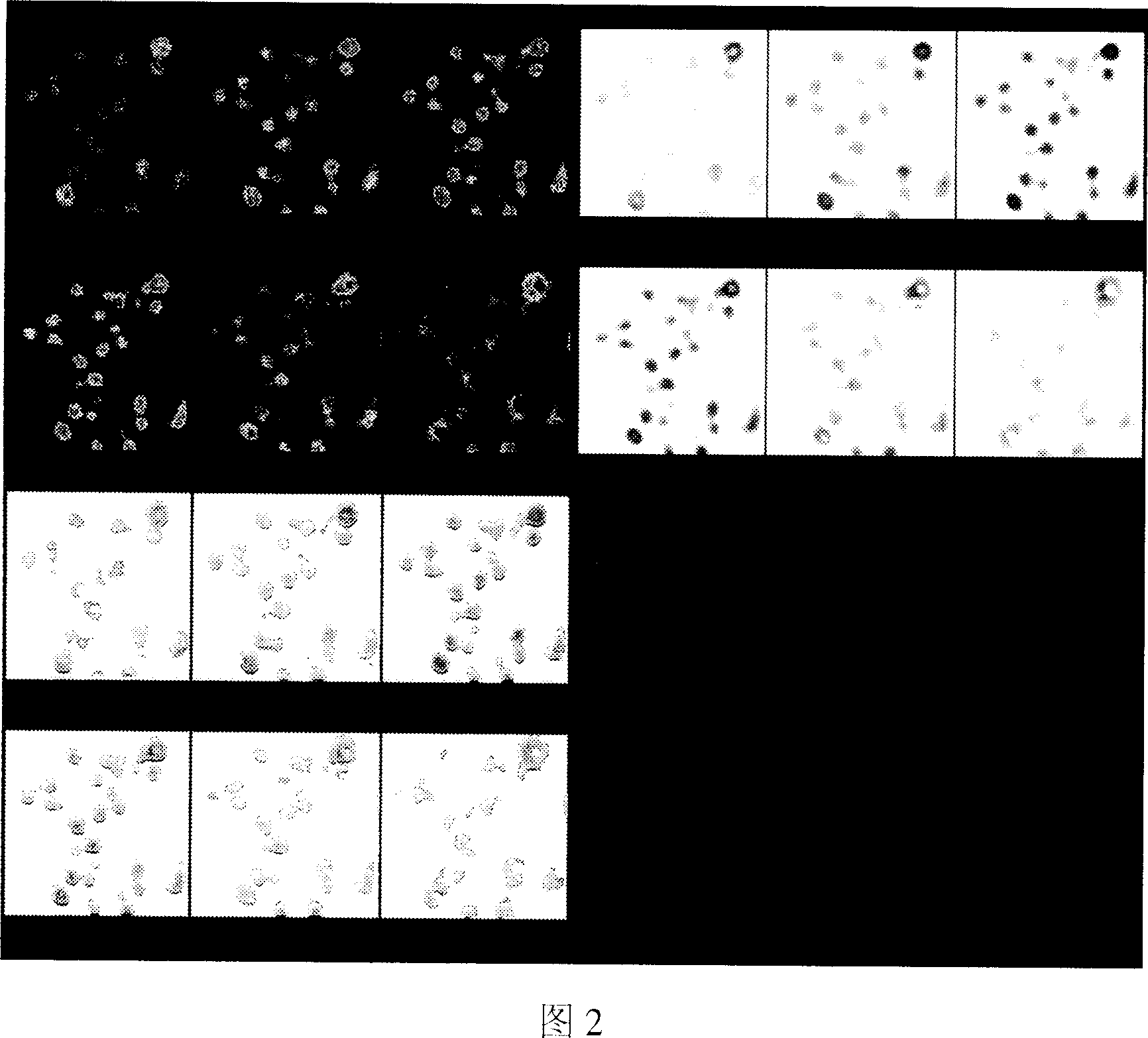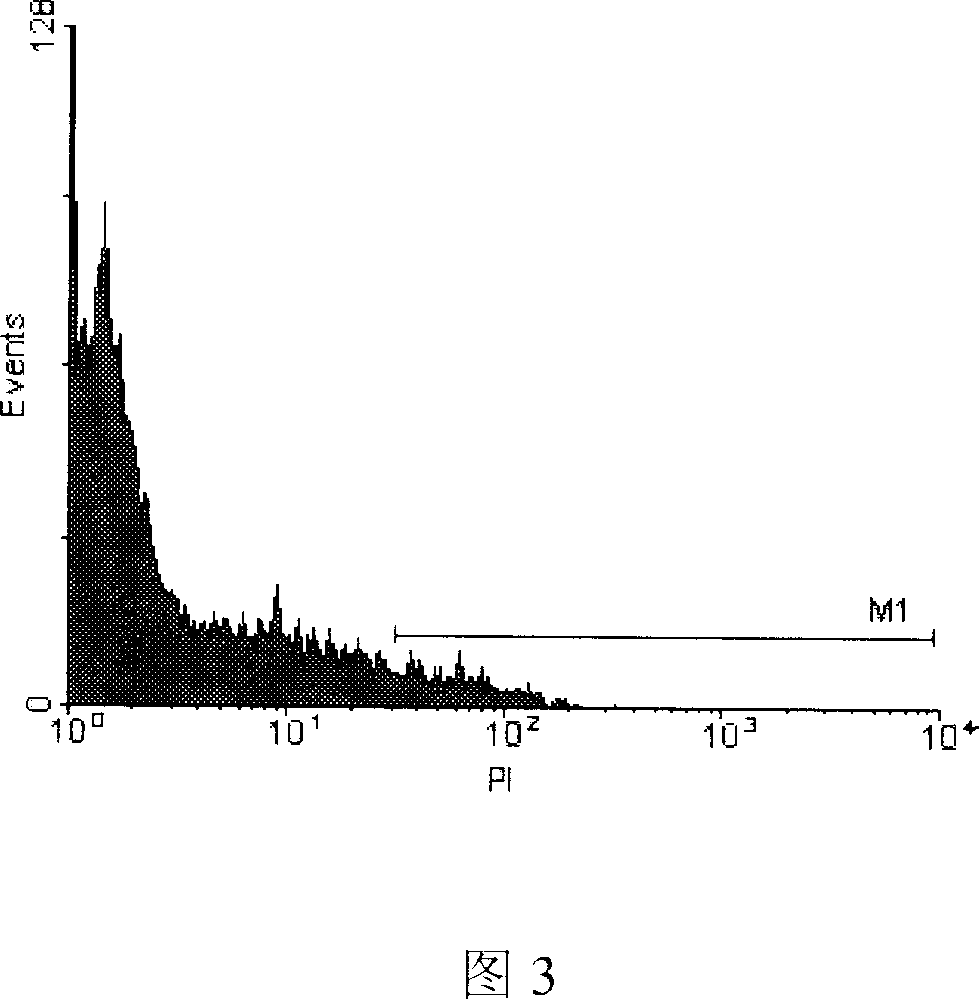Nano antibiotic antiviral condom
A condom, anti-virus technology, applied in male contraceptives, peptide/protein components, medical preparations containing active ingredients, etc., to achieve good sterilization effect
- Summary
- Abstract
- Description
- Claims
- Application Information
AI Technical Summary
Problems solved by technology
Method used
Image
Examples
Embodiment 1
[0020] Example 1 Grafting of interferon
[0021] 1. Add IFN-α (30 μg, 0.002 μmol) to 3 ml of N-succinimide (61.5 μg, 0.2 μmol) in dimethylamide DMF / PBS (volume ratio 4:1) solution, and stir the reaction in an ice bath After 48h (4°C), after the synthesis, the azidophenyl-derived IFN-α was purified by ultrafiltration membrane (milipore moleculecut II, 10k Na).
[0022] 2. Before photofixation, the polyurethane condom was cut into a circular piece with a diameter of 10 mm and placed on a 24-well tissue culture plate, and then the following treatment was performed: respectively, the photoactive IFN-α was treated with six concentrations (0.01 μg, 0.025 μg, 0.05μg, 0.075μg, 0.1μg, 0.25μg) into the 24-well tissue culture plate, after adding the drug, put each plate in the refrigerator, freeze-dry (4°C), and then put it under the ultraviolet lamp (15W) at 2cm After irradiating for 20 minutes, the active IFN was immobilized on the PU material by using the very active azide group. Aft...
Embodiment 2
[0023] Example 2 Electron microscope observation of the morphology of photoimmobilized IFN-α
[0024] A, B, C, and D of Fig. 1 are respectively the polyurethane and the polyurethane surface after grafting active IFN-α observed under the field emission scanning electron microscope. After that, it can be seen that the interferon forms a uniformly distributed and orderly protein layer on the surface of the polyurethane, and there is also a small amount of agglomeration as shown in Figure 4D, because the interferon molecule is not large. Take Figure 1D as an example, observe at 20,000 times, use Imagepro plus5.0 to analyze the picture under the electron microscope, the parameters are as follows:
[0025] Typical object area in:
[0026] Stats
[0027] The computer scanned and analyzed the 10,406 objects in Figure 1D. There are 390 particles that conform to IFN. The average particle size of the particles is between 28.7nm and 109.9nm, and the average particle si...
Embodiment 3
[0028] Example 3 Observation of the morphology of IFN-α by laser scanning confocal microscope (CSLM)
[0029] Two channels were used for confocal laser scanning microscopy observation, the first channel was used to observe the stained FITC IFN-α, the second channel was projected to show the surface of polyurethane material, and the third channel was superimposed. The interferon on the surface of the material was sliced six times to obtain Figure 2.
[0030] FITC is extremely easy to quench, but it can specifically stain IFN-α protein. It can be seen that IFN molecules are not simply attached to the surface of the material, but are firmly grafted on the surface of polyurethane and have biological activity.
PUM
 Login to View More
Login to View More Abstract
Description
Claims
Application Information
 Login to View More
Login to View More - R&D
- Intellectual Property
- Life Sciences
- Materials
- Tech Scout
- Unparalleled Data Quality
- Higher Quality Content
- 60% Fewer Hallucinations
Browse by: Latest US Patents, China's latest patents, Technical Efficacy Thesaurus, Application Domain, Technology Topic, Popular Technical Reports.
© 2025 PatSnap. All rights reserved.Legal|Privacy policy|Modern Slavery Act Transparency Statement|Sitemap|About US| Contact US: help@patsnap.com



